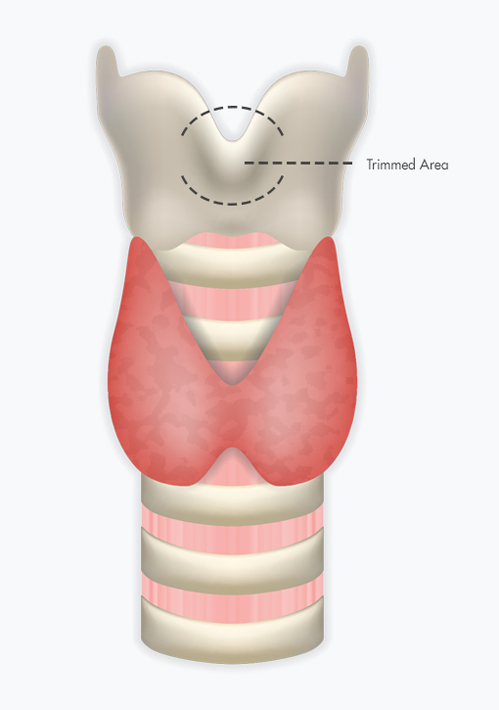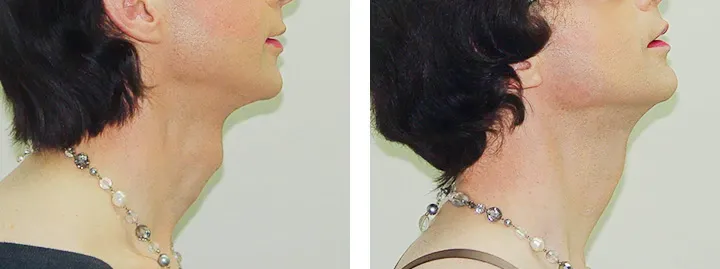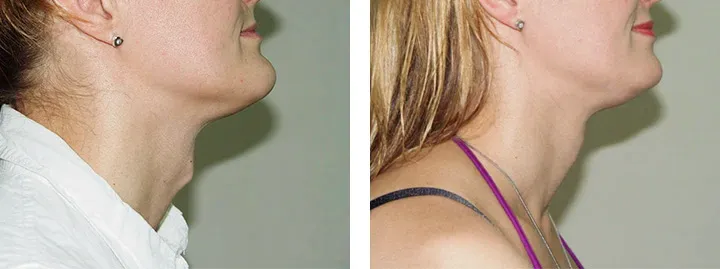Adam’s Apple Shaving at WIH Hospital: Achieve a harmonious Neck Line
A prominent Adam’s apple can be a source of self-consciousness for transgender women or individuals desiring a more feminine appearance. At WIH Hospital, our highly skilled surgeons specialize in Adam’s Apple Shaving, also known as Tracheal Shave, offering a precise and transformative solution to create a smoother, more harmonious neck contour that aligns with your desired aesthetic.
Understanding the Adam’s Apple
The trachea, commonly referred to as the “voice box,” is the cartilage structure that surrounds and protects the vocal cords. In genetic males, the Adam’s apple tends to increase in size during puberty, becoming a prominent feature of the neck. This noticeable bump can disrupt the natural contours of the neck and may hinder one’s ability to present as female. In contrast, the Adam’s apple in genetic females remains small and generally invisible.
What is Adam’s Apple Shaving (Tracheal Shave)?
Adam’s Apple Shaving, or Tracheal Shave (Chondrolaryngoplasty), is a surgical procedure designed to reduce the size and prominence of the laryngeal prominence by carefully reshaping and reducing the excess thyroid cartilage. This procedure is a key component of facial feminization surgery for many transgender women.
The procedure involves carefully shaving down the anterior surface and wings of the cartilage surrounding the larynx, resulting in a more feminine neck profile. This surgery is particularly beneficial for individuals who wish to decrease the prominence of their Adam’s apple and achieve a more feminine appearance.
A Good Candidate for Tracheal Shave
- Self-conscious about the size or prominence of their Adam’s apple
- Transgender women
- Realistic expectations
- Good general health
The process of Tracheal Shave
- Anesthesia: The surgery is performed under local anesthesia, Intravenous Sedation, or general anesthesia.
- Incision Placement: A small, discreet incision is typically made in a natural skin crease in the neck, often just below the chin or over the Adam’s apple, to ensure any resultant scar is as inconspicuous as possible.
- Cartilage Reshaping: Through this incision, the surgeon carefully accesses the thyroid cartilage. Using specialized instruments, the prominent portion of the cartilage is shaved down and reshaped to create a more natural appearance.
- Closure: Once the desired contour is achieved, the incision is closed with fine sutures, and a sterile dressing is applied to the area.
Impact on the Voice
While a tracheal shave can potentially affect the voice, such occurrences are rare. Some patients may experience temporary voice weakness following the procedure, but there are typically no long-term effects. In rare cases, improper technique could lead to damage to the voice box, but this is not a common outcome of the surgery.
Pre-operative and post-operative Care
Pre-operative Care
- Avoiding certain medications for a specified period.
- Stop smoking and alcohol drinking before the surgery.
- Follow Fasting instructions.
Post-operative Care
- Our experienced nurses will monitor the patient in the recovery room.
- The surgeon will prescribe medication for pain and discomfort.
- Attend all follow-ups at the WIH hospital with the surgeon.
How is the Surgery Performed?
Surgeons may traditionally perform tracheal shaves through an incision over or above the trachea; however, this approach carries greater risks and may not achieve optimal aesthetic results. A more advanced method involves using endoscopic techniques, which allow for a smaller incision beneath the chin. This minimally invasive approach reduces scarring and enhances recovery. During the procedure, the surgeon carefully shaves the triangular shape of the cartilage, reducing its fullness while protecting the vocal cords. After the procedure, the area is typically covered with neck muscles to ensure a smooth contour.
Recovery and Scarring Expectations
With the use of a small incision under the chin, scarring from a tracheal shave is minimal and tends to fade quickly.
- Week 1: This is a crucial step to rest and keep your head elevated. Stitches are usually removed within 7-10 days.
- Weeks 2-4: The patient can gradually resume light activities, avoiding strenuous exercise. Temporary voice changes, such as mild hoarseness, may still be present but will typically resolve.
- Months 1-3: The final results of the reduction become increasingly apparent as the tissues fully settle. Most patients can resume all normal activities.
- 6 Months & Beyond: The long-term results of your Adam’s Apple Shaving will be stable and permanent, offering a lasting improvement to the neck contour.

Potential Risks
- Swelling and Bruising
- Infection
- Bleeding
- Scarring
- Voice Changes
Benefits of Tracheal shave surgery
- A Smoother, More Feminine Neckline
- Enhanced Confidence and Self-Esteem
- Alleviation of Gender Dysphoria
- Minimal scarring
- Permanent Results
Conclusion
A tracheal shave is a valuable surgical option for those seeking to achieve a delicately feminine neck. The procedure not only reduces the prominence of the Adam’s apple but also enhances overall facial harmony. If you are considering this surgery, trust experienced professionals to deliver the results you desire.
FAQ
Our surgeons take extreme care to preserve your vocal cords during the procedure. While temporary hoarseness or a slight change in vocal quality can occur due to swelling, these usually resolve as you heal. Permanent voice changes are very rare when performed by experienced surgeons.
The surgery typically takes between 1 to 1.5 hours, depending on the individual’s anatomy and the extent of reduction required.
Our surgeons strategically place the incision in a natural skin crease, such as under the chin or in a neck fold, to minimize visibility. With proper wound care, the scar typically fades significantly over time, becoming very discreet.
Most patients can return to light, non-strenuous activities within 1-2 weeks. Strenuous exercise should be avoided for at least 4-6 weeks to allow for proper healing.
Yes, Adam’s Apple Shaving can often be combined with other facial feminization surgeries or other cosmetic procedures, depending on your overall treatment plan and the surgeon’s assessment. This can be discussed during your consultation.
The surgery is performed under general anesthesia, so you will not feel any pain during the procedure. Post-operatively, mild to moderate discomfort is common, which can be effectively managed with prescribed pain medication.




